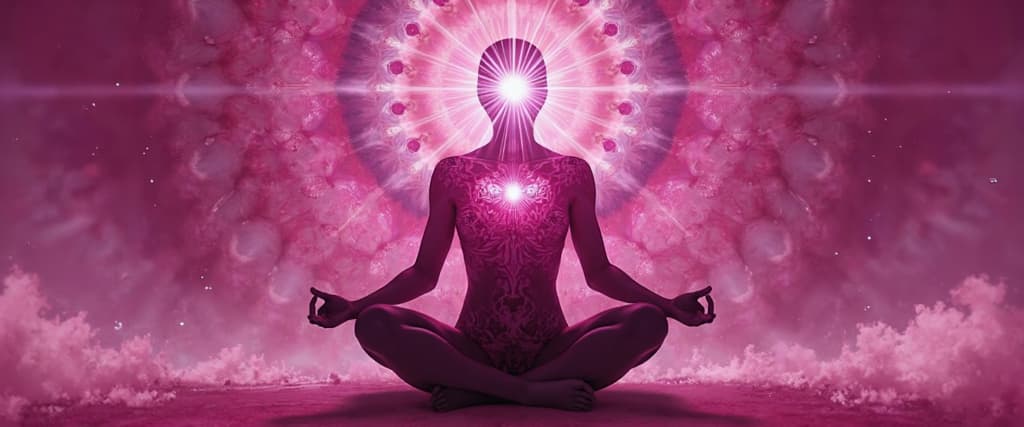Discover whether clairsentience training can help reveal randomness — or if what we’re truly sensing is something deeper: the emotional imprint of uncertainty, the hidden patterns beneath chaos, or the meaningful coincidences we call synchronicity.
Can Clairsentience Sense Randomness?
Can humans sense randomness — not through logic or math, but through intuition? Clairsentience, the intuitive “clear feeling” of unseen forces or energies, is often linked to emotional or energetic perception. But could it extend further, into the realm of probability and randomness? Dozens of remote viewing practitioners operate independently, and their results are sometimes remarkably accurate.
For those curious to test your sense of randomness, here is the best platform for clairsentience training. As of July 2, 2025, it is the most advanced trainer for developing this skill. If you're testing intuition, associative remote viewing, or just building signal-line sensitivity, this is a strong tool. A major advantage is its built-in instructor guidance, making it accessible even for beginners with no prior background. But before diving in, it's worth asking a deeper question: what exactly are we trying to sense — randomness, or something else entirely? If randomness is only apparent, then what we’re sensing might not be chaos — but undiscovered order.
What Is Randomness?

To answer that, we need to understand what it really is. While it's often used casually to describe anything unpredictable or chaotic, randomness has a very specific meaning in mathematics and physics.
In mathematics, a random event is defined as an outcome of a process that cannot be precisely predicted — even if the long-term statistical behavior of that process is well understood. This includes classic examples like coin tosses, dice rolls, or the decay of a radioactive atom. In these cases, although we can model the probability (e.g., a 50/50 coin toss), we cannot know the exact outcome of a single trial in advance.
But it is not a binary concept — it exists on a spectrum. Different forms of randomness emerge depending on the system generating it:
• Deterministic Chaos
Some systems appear random but are actually governed by underlying rules and initial conditions that are simply too complex to track. Weather patterns and turbulence are good examples. These are deterministic systems that only seem unpredictable due to their sensitivity to initial conditions — a concept captured by chaos theory.
• Pseudo-Randomness
Most digital “randomness” — like that used in computer simulations or games — is generated by algorithms. These are called pseudo-random number generators (PRNGs). While they can produce sequences that appear random to the human eye, they are fully determined by their initial seed values. Given the same starting point, a PRNG will always produce the same sequence — making it predictable under the hood.
• True Randomness
At the deepest level, we encounter true randomness in quantum physics. For instance, when a photon passes through a beam splitter or an electron decays from a radioactive atom, the outcome seems to be entirely uncaused — there is no hidden variable (as far as we know) dictating what will happen. These events are considered fundamentally indeterminate. Quantum random number generators (QRNGs) are built on these principles.
So when we talk about “sensing randomness”, the nature of what we’re trying to sense depends on the type of randomness involved. But that raises a more intriguing question: what exactly is doing the sensing? And how might a human being become aware of something so elusive?
To explore that, we turn to the intuitive faculty known as clairsentience.
What Is Clairsentience?
From Latin "clarus" (clear) and "sentire" (to feel), clairsentience is one of the four "clairs" of extrasensory perception:
- Clairvoyance: clear seeing
- Clairaudience: clear hearing
- Clairsentience: clear feeling
- Claircognizance: clear knowing
Clairsentients often report:
- Feeling emotional energies of others
- Sensing environments as "light", "heavy", "charged", or "neutral"
- Picking up patterns or imbalances in group dynamics
This ability may involve hypersensitivity to subtle cues — such as micro-expressions, environmental energy shifts, or even informational “resonance.” But rather than detecting randomness itself, clairsentients may be sensing their internal emotional or energetic response to unpredictable situations.
Psychologically, this aligns with apophenia — the mind’s tendency to perceive meaningful patterns in random data. Philosophically, however, it touches on synchronicity, a concept introduced by Carl Jung to describe meaningful coincidences that lack a direct causal link. Jung viewed these events as an acausal connection between a person’s inner state and external reality — suggesting a hidden “order” behind apparent randomness.
This raises a compelling possibility: Could clairsentience be less about sensing randomness itself, and more about detecting synchronicity — a deeper, more meaningful form of unpredictability?
Conclusion: The Feeling of the Unknowable
So, can people sense randomness using clairsentient skills?
Scientifically? Not reliably — yet some patterns emerge in small trials. Psychologically? Absolutely — humans react emotionally to unpredictability. Philosophically? Perhaps it is just a misunderstood order, waiting to be felt rather than seen.

